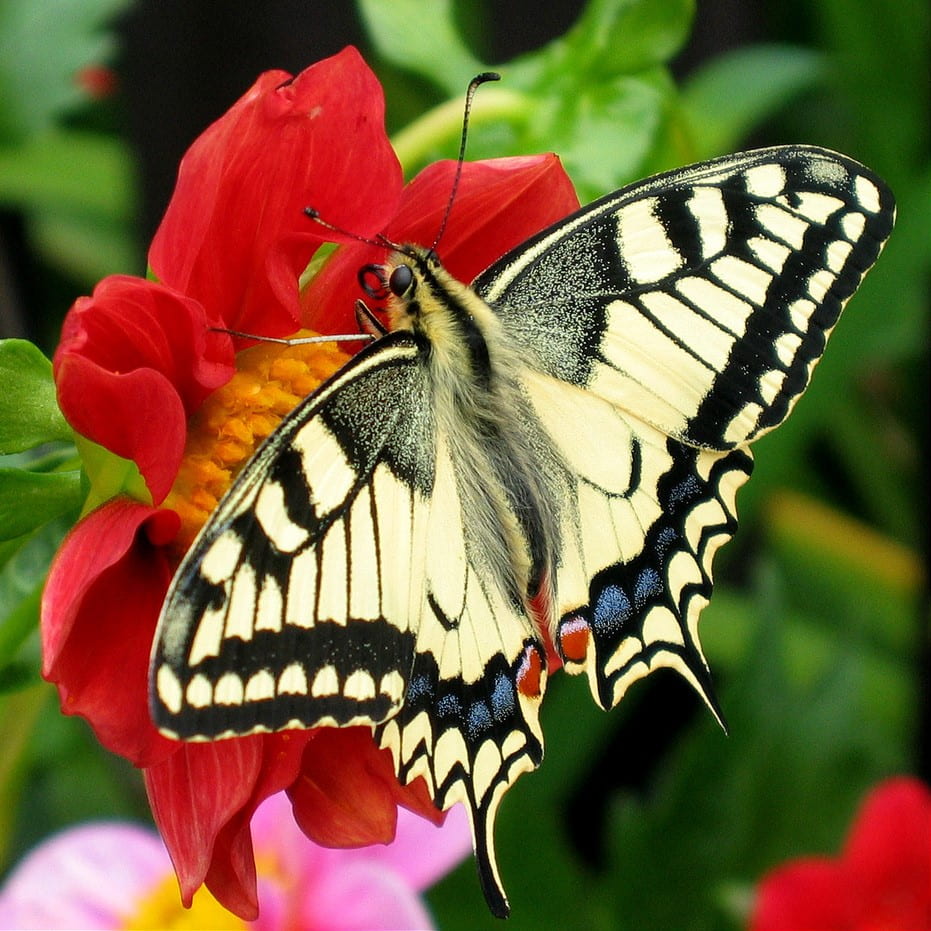 Dr. Lucy Oldfield is a practising Clinical Psychologist working in a primary care adult mental health setting in the NHS alongside lecturing at Goldsmiths on the Foundations in Clinical Psychology and Health Services MSc programme. Her clinical work is focused around anxiety and mood disorders with a specialist interest in Post-Traumatic Stress Disorder.
Dr. Lucy Oldfield is a practising Clinical Psychologist working in a primary care adult mental health setting in the NHS alongside lecturing at Goldsmiths on the Foundations in Clinical Psychology and Health Services MSc programme. Her clinical work is focused around anxiety and mood disorders with a specialist interest in Post-Traumatic Stress Disorder.
Here, in honour of #TimeToTalk Day, she recounts recent work for iCope on specific phobia.
This piece was originally published here.
Jessica* had a lifelong phobia of butterflies but being a new mum she was very conscious of transferring this phobia to her two-year-old son.

“I’d put myself in dangerous situations before. I had run onto a road of traffic without any control because a butterfly had come near me and I’d never want to be in that kind of a position while I was holding my little boy’s hand. I was also having panic attacks and dealing with stress at work too, so I self-referred to iCope. And, I have family who are based in the Philippines. So although the UK isn’t scattered with butterflies there are large breeds in my home country and it used to really put me off going there.”
iCope is a psychological therapies service, they provide talking therapies and work with a range of conditions including stress, worry, depression and insomnia. Clinical Psychologist, Dr Lucy Oldfield, who worked closely with her, explained: “I met Jessica for a face-to-face assessment to get some more detail about the problem. “Treatment for phobias, anxiety and panic is psychological, and ultimately it is about exposing the person to their fear in gradual steps but to tackle this you need an overarching understanding of their condition. “There was a particular traumatic event in her history which she hadn’t connected to why she had this phobia. It was an important factor in itself because she was feeling very ashamed of being afraid of butterflies and thought most people would think this was a silly fear and that it didn’t make sense. “Jessica was also having panic attacks when there were no butterflies around. On her way into work she would sometimes feel very nervous and think she needed to get off public transport. We realised this was all connected as fear of fear.”
There were a number of stages to her treatment. Jessica explained, “We created the behaviour that someone displays during a panic attack. For me, I would start breathing differently and we experimented with that. This was before we began to look at my phobia.“ The first stage was to outline the most feared outcomes in a gradual order. For example, it was anything from saying the word ‘butterfly’ which was making Jessica feel sick and disgusted, to actually physically seeing the insect. The treatment involved confronting each item in the list head on as quickly as possible. Jessica said: “In the early stages we began by drawing butterflies on paper, we’d cut them out, throw them in the air to simulate their flying which initially made me feel very anxious and panicky but became fun over just a few minutes. After that session I continued doing this at home. I played a game with my son, colouring in and drawing butterflies. I did feel like I was making progress. Then we began looking at photos, still images, colour, black and white. I had control over the computer and was choosing the right image. I was looking at the screen long enough that the physical symptoms actually subsided and I learned that the panic was easing.”
Exposure to these fears allows us to rationalise what is happening at the emotional, ‘felt’ level, so it is powerful to learn that anxiety always drops if we stay in the situation for long enough. Lucy explained: “The session was going well, but at the end a picture jumped out. It was a huge butterfly which looked as if it was on somebody’s face. This was the first time I witnessed the peak of Jessica’s anxiety. She sprang off her chair, onto the other side of the room, cowering, clearly very distressed. She was very embarrassed about it but it was useful for me to see, because if we were outside she may have run into a road – she didn’t have any control over it. These kinds of reactions are useful for me to use as a learning tool.” Jessica went away and decided to look at more pictures on the internet, then she started to watch documentaries.
Before the next step – seeing a real butterfly. “I went to an exhibition at the Natural History Museum and looked at the cases of dead butterflies. I felt like I had learnt to manage my emotions.” But that wasn’t the final step – the final step was to face her fear. “We went to an exhibition where there were real butterflies. Initially, I was very calm but as we got tickets and walked towards it my panic increased. Before we walked in, there were some strips of plastic and I didn’t want to go in but we spend a lot of time recapping what I had learnt. “I knew that the worst thing for me would be coming so far and not being able to actually walk in and face my fear. We began by putting one hand through the gap, one foot and then we were inside. I did jump a few times but after a while I was walking around myself. Although I was feeling panic-stricken it was nowhere near how I felt before the treatment.”
*Jessica is not her real name
Dr. Lucy Oldfiewld is on Twitter @oldfieldLucy